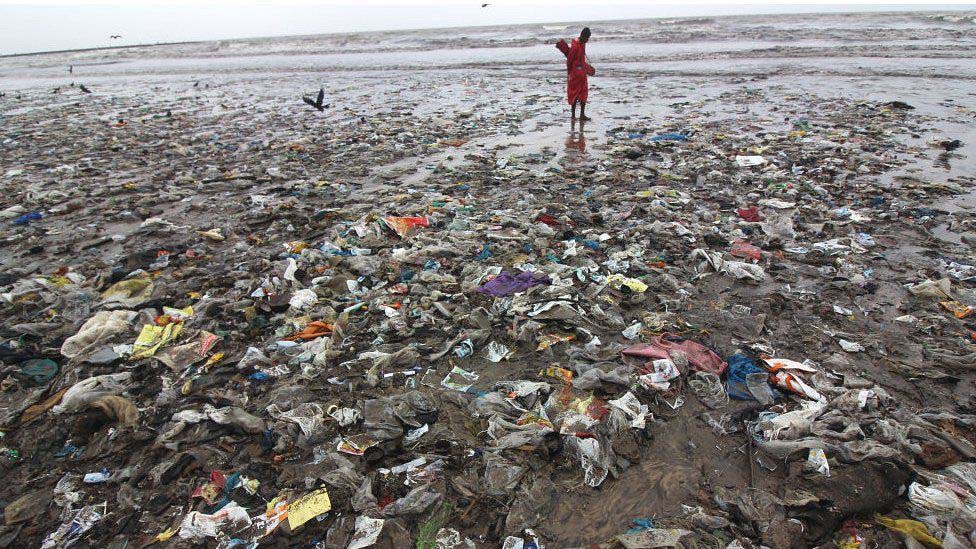The United Nations Environmental Programme (UNEP) has, not for the first time, issued a discomfiting warning that the unchecked irresponsible disposal of plastics in oceans and other bodies of water will inevitably come back to haunt the global environment, making life on the planet increasingly unbearable for its human inhabitants.
UNEP’s most recent warning about what it describes as the continued sharp growth in the irresponsible disposal of plastics, comes with a prediction that the prevailing practice could see the volume of plastics dumped in this manner double in less than a decade. In linking the current global plastics disposal regime to the overall global pollution crisis, UNEP says that this could have dire consequences for health, the economy, biodiversity and the climate, globally.
he UNEP Report, titled “From Pollution to Solution: a Global Assessment of Marine Litter and Plastic Pollution,” asserts that the continued irresponsible dumping of plastics poses a growing threat, across all ecosystems, from source to sea.
With the growth of the global economy and the expansion of trade and commerce creating an increasing demand for plastics to respond to the requirements of the packaging industry, the international business community has reacted relatively feebly to calls from environmental bodies for suitable biodegradable substitutes. At the domestic level, what is held by countries’ wholesale and retail sectors to be the convenience of plastics in packaging has meant that the push by environmental bodies to reduce their use has met with a high degree of indifference from both business owners and consumers.
Back in 2019 the government had used the occasion of World Wildlife Day to sensitise the population to a decision to assertively push a ban on single-used plastics to align with United Nations Sustainable Development Goal (SDG) #14, to “conserve and sustainably use the oceans, seas and marine resources for sustainable development.” Up until now, little if anything in the way of positive action has resulted from this undertaking. Back then, 2021 had been identified as the year in which Guyana would effect a systematic ban of single-use plastics. In his address to mark World Wildlife Day the then minister responsible for the environment, Joseph Harmon had announced that work had begun on sensitising our population to the fact that “2021 is the date we have identified for a ban on single-use plastic.”
Guyana’s approach to waste including the disposal of plastics comprises a mix of legal and illegal disposal, including burning. While most of the legal disposal is done by either municipal or private contractors, a great deal of waste disposal is characterised by the routine dumping of garbage, including large volumes of plastics on open streets, alleyways, parapets, and in waterways ranging from small streams and outlet trenches to rivers.
Various ‘options’ that might conceivably be pressed into service to reduce the dumping of what are known as single-use plastics have been mooted though some of these, including recycling, have not been greeted with any enthusiasm. Environmentalists have also cautioned against alternatives that include bio-based or biodegradable plastics, which they say, currently pose a threat similar to conventional plastics. What it calls for is the immediate reduction in plastic production and consumption, across the whole value chain. Additionally, it seeks countries’ investments in far more robust and effective monitoring systems to identify the sources, scale and fate of plastic. Ultimately, a shift to circular approaches and more alternatives are necessary.
According to UNEP Executive Director Inger Andersen, the Agency’s current assessment of the state of play insofar as the dumping of plastics is concerned “provides the strongest scientific argument to date for the urgency to act, and for collective action to protect and restore our oceans, from source to sea.” She said that a major concern is what happens with breakdown products, such as micro-plastics and chemical additives, which are known to be toxic and hazardous to human and wildlife health and ecosystems.
UNEP says that currently, plastics account for 85 per cent of all marine litter and that between 23 and 37 million metric tons of waste is dumped into the ocean per year. This means about 50kg of plastic per meter of coastline. The phenomenon, the agency says, poses behavioural, suffocation, and starvation-related challenges for all marine life, from plankton and shellfish; to birds, turtles and mammals. They all face the grave risk of toxification, behavioural disorder, starvation and suffocation.
Plastics are also ingested through seafood, drinks and even common salt. They also penetrate the skin and are inhaled when suspended in the air.
By 2040, there could be a $100 billion annual financial risk for businesses if governments require them to cover waste management costs. It can also lead to a rise in illegal domestic and international waste disposal, the UNEP report says.
The UNEP report will inform discussions at the UN Environment Assembly in 2022, where countries will come together to decide a way forward for more global cooperation.





